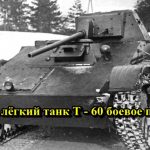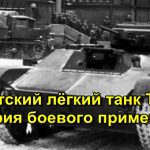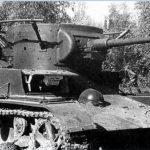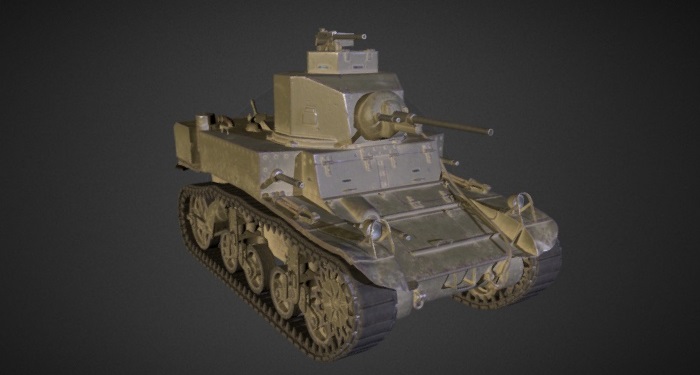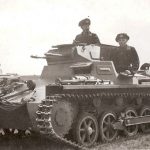The first BT-2 serial tanks began to enter the army in 1932. They were intended for arming independent mechanized formations, the only representative of which at that time in the Red Army was the 1st mechanized brigade named after K.B.Kalinovsky of the Moscow Military District. The “battalion of fighter tanks” at BT-2 was also included in this brigade. Since the fall of 1932, the formation of larger formations — mechanized corps (5th, 7th and 45th), consisting of two mechanized brigades, one of which was armed with BT tanks, and the other began in the Moscow, Ukrainian, and Leningrad military districts. – T-26. In February 1935, the mechanized corps switched to a new organization of the same type, in which both brigades were armed with only BT-2 and BT-5 tanks. In addition to mechanized brigades, BT tanks entered service with mechanized regiments of cavalry divisions. The operation of these tanks in the troops was difficult and revealed a large number of shortcomings of the BT-2 and BT-5 – the engines were capricious and unreliable, the tracks of the tracks were made of low-quality steel and often collapsed. The troops were catastrophically short of spare parts (because of which, by order of the head of the UMM RKKA, 50% of the tanks were ordered to be kept in an untouched reserve in order to save motor resources), and the level of technical training of personnel was extremely low. Nevertheless, the tankers loved the “bateshki” for their excellent dynamic qualities, which made it possible even to jump 15-20 m over various obstacles, which was actively demonstrated by maneuvers to high command and foreign military attaches. By the end of 1936, in all mechanized corps and mechanized brigades, BT-2 and BT-5 were replaced by structurally more advanced BT-7s, and BT-2 began to be used as training machines in military units and military schools.

For the first time, BT-2 took part in military operations during the Polish campaign of the Red Army (“Liberation Campaign” in Western Belarus and Western Ukraine) in September 1939, however, they were used to a limited extent, since tank brigades, both separate and corps submissions, were already equipped with modern BT-7. But the older BTs were in service in the tank regiments of the cavalry divisions: the 44th tank regiment of the 3rd cavalry division had 34 BT-2 tanks, the 32nd tank regiment of the 5th cavalry division – 35 BT-2 and BT-5 tanks , and the 42nd tank regiment of the 4th cavalry corps – 41 BT-2 tanks. The first two regiments had no casualties, and the 42nd regiment lost 3 tanks during the fighting.
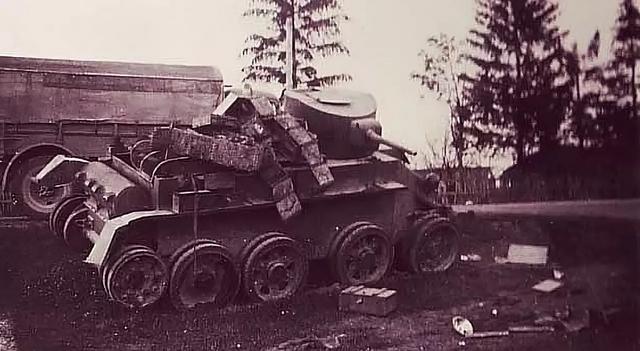
But in the Soviet-Finnish war (November 30, 1939 – March 13, 1940), many outdated tanks (including BT-2) took part, since tank units of the rear military districts, equipped with training vehicles, were involved in the fighting -fighting park. For example, on November 30, 1939, 82 BT-2 and 83 BT-5 were listed as part of the 1st light tank brigade. The team was fully equipped with well-trained personnel, but most of the tanks were worn out due to lengthy marches to the borders of Estonia, Latvia and Finland. In the early days of the fighting, acting as part of the 10th Panzer Corps, the brigade captured several Finnish settlements. Then, during January 1940, she was engaged in combat training and repair of equipment, having received 16 BT-2, 22 BT-5 and 112 BT-7 to make up for losses.
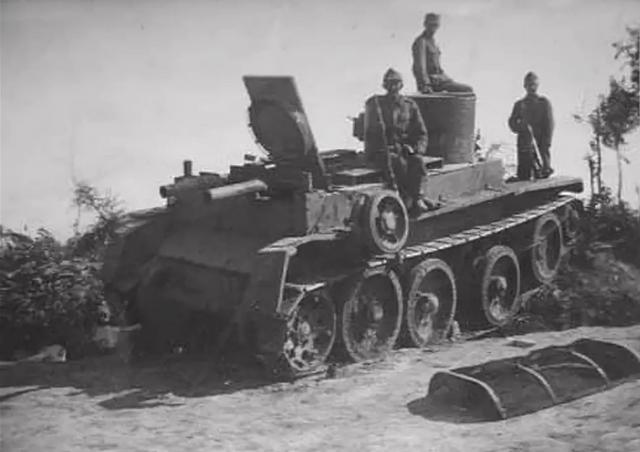
In early February, the 1st light tank brigade was assigned to the 10th Rifle Corps, and from February 9 to 15, 1940, the tanks of its two tank companies supported infantry attacks against Finnish gunpoints at heights in the Melola area. Since February 27, attached to the 34th Rifle Corps, the brigade has been fighting to destroy the retreating enemy in the Vyborg area. For all the time of heavy fighting in Finland, complicated by the lack of evacuation means, 61 BT tanks (8 BT-2, 18 BT-5 and 35 BT-7) were lost from artillery fire, 60 were blown up by mines and landmines (8 BT-2, 19 BT-5 and 33 BT-7), 29 burned out (4 BT-2, 2 BT-5 and 23 BT-7), 13 drowned (2 BT-2, 3 BT-5 and 8 BT-7), and 150 tanks failed for technical reasons (68 BT-2, 74 BT-5 and 8 BT-7). At the same time, 100 vehicles were restored on their own by the brigade, and the rest had to be evacuated to the rear for factory repairs.
In June 1940, it was decided to leave all BT-2 “as a training park until it is completely worn out”. On June 1, 1941, the Red Army was armed with 580 BT-2 linear tanks, of which 366 were on the move and were used as military training vehicles in the troops, 119 required medium, and 30 – major repairs; the remaining tanks were used only as training stands. In the western military districts of this number, there were 396 BT-2 tanks. With the outbreak of hostilities, all of these training vehicles, both cannon and machine guns, were put into operation and actively participated in border battles as part of the tank and motorized divisions of mechanized corps on all fronts.

For example, in the 5th mechanized corps there were 10 BT-2s, in the 6th mechanized corps – 30, in the 7th mechanized corps – 27, in the 8th mechanized corps – 14, in the 9th mechanized corps – 21, and in the 24th tank division of the 10th mechanized corps – as many as 139 BT-2. Most of these outdated and worn-out tanks were quickly lost in battle, for example, in the 24th Panzer Division on July 24, 1941 there was no longer a single working BT-2. Among other things, in the units there was an acute shortage of 37 mm shells, since their production was long stopped. But the BT-2 also inflicted damage on the enemy – for example, the 20th Panzer Division of the 9th Mechanized Corps, which had 33 training and heavily used tanks BT-2 and BT-5, attacked parts of the German 13th Motorized on June 24, 1941. divisions at Klevan in Ukraine. Despite the fact that it was impossible to engage in open battle with lightly armored and lightly armed tanks, the 20th Panzer Division was able to stop the advance of the Germans, albeit at the cost of losing all of their BT … The training units and military schools located in the rear military districts of BT-2 were also hastily put into combat condition and thrown into battle as part of the formed tank units, they too, for the most part, were quickly lost in the summer and fall of 1941.

A certain amount of BT-2 was used in the battle for Moscow, for example, in the 18th tank brigade of the Western Front, which suddenly attacked and defeated a column of German tanks and motorized infantry from the 40th motorized corps on the outskirts of Gzhatsk on October 9, 1941, along with 29 T-34 tanks were 5 BT-2, 24 BT-5 and 3 BT-7. But already on October 11, the 18th tank brigade was surrounded and, waging battles with superior enemy forces, left it only the next day, losing all the BT-2 and BT-5 tanks. The 21st tank brigade, which arrived from Vladimir to replenish the Western Front and had 29 T-34, 10 T-60, 5 BT-2, 15 BT-5 and BT-7 on October 16, 1941, also fought in the Moscow direction. the brigade went on the offensive on Kalinin, destroying 34 enemy tanks in 4 days of battle, according to crew reports, and losing 21 T-34s, 1 T-60s and 7 BTs. On February 26, 1942, 7 BT-2s still existed in the 150th tank brigade of the Western Front and in the 10th tank brigade of the South-Western Front.
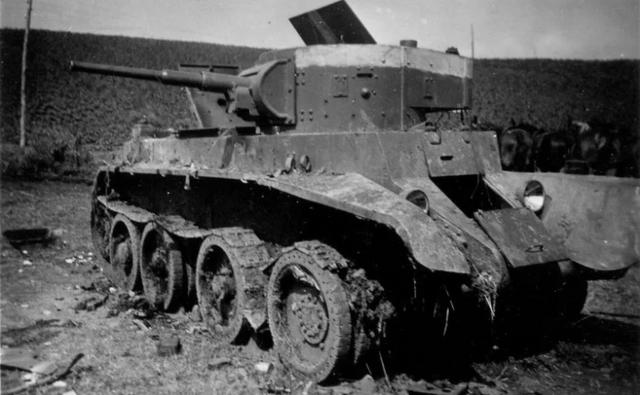
Separate vehicles of this type were found in tank units even in 1942-1943. The BT-2 remained the longest in stable sections of the Leningrad Front, where in the summer of 1943 there were 12 more. As part of the 49th Guards Tank Regiment, the breakthrough of the 42nd Army and some other parts of the Leningrad Front, BT-5 and even the last BT-2 took part in lifting the blockade of Leningrad, and then in defeating the Finnish troops on the Karelian Isthmus in 1944.

